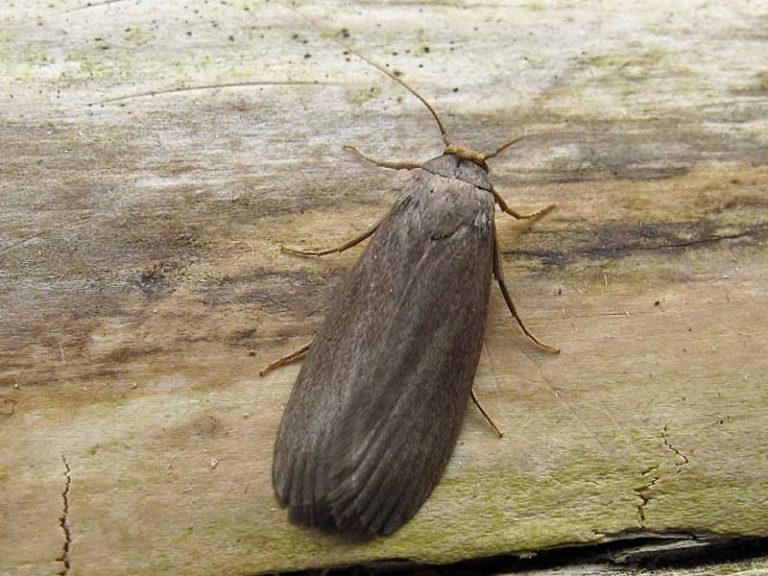
In the UK there are two types of wax moth; the Greater wax moth (Galleria mellonella) and the Lesser wax moth (Achroia grisella).
Image Courtesy The Animal and Plant Health Agency (APHA), Crown Copyright
Our problem typically is with the greater wax moth which will tunnel (making galleries, which is how it got its Latin name) into the wood or into polystyrene hives. The moths always prefer brood comb to honey only (super) comb and they prefer drier comb to wet. Wet super combs (those which have had the honey extracted and have not been cleaned) may of course still have wax moth larvae in them.
The moths seem more prevalent in the late summer, the time when we are dealing with extracted supers. We therefore need to prevent the moths from getting into the comb, and we need to be wary of storing combs which look fine at the end of the year (for example in September) but are ruined when we bring them out of storage in Spring. If you have a big enough freezer you can freeze frames for at least 24 hours to kill off adult moths, larvae and pupae. There are also preventive treatments available from most Beekeeping Suppliers – for example B401 (also known as Certan), though this is currently unavailable in the UK. It is a safe and environmentally friendly product based on a concentrated solution of Bacillus thuringiensis, an insecticidal bacterium which is harmless to bees.

To spot wax moth larvae look for lines (tunnels) through the comb. If the moth is present in a hive (which is more likely in the brood comb) sometimes you may also see a line of uncapped brood. Look for the moth larva at one end of this. Dig into the frame where you expect the larvae to be, or knock your hive tool on the frame, which may make the larva come to the surface. Dig it out and put it into your smoker to destroy it.
Image Courtesy The Animal and Plant Health Agency (APHA), Crown Copyright
If a wax moth infestation is left unchecked, you will see furry tunnels and cocoons across the frames. You can remove the damaged comb with your hive tool and your bees will repair it when they are building comb; however, you are better off replacing the frames if it has become this rampant.
